GREEN BAY, Wis. — Cherney Maribel Caves County Park sits 25 miles southeast of Green Bay and is home to 10 caves, many of which are open year-round for exploration.
Outside of Kid's Passage, jubilant sounds of young explorers can be heard as youngsters worked their way through the cave with flashlights or their parent’s reluctantly-borrowed cellphone. It’s a narrow fit, but adults like to check it out as well.
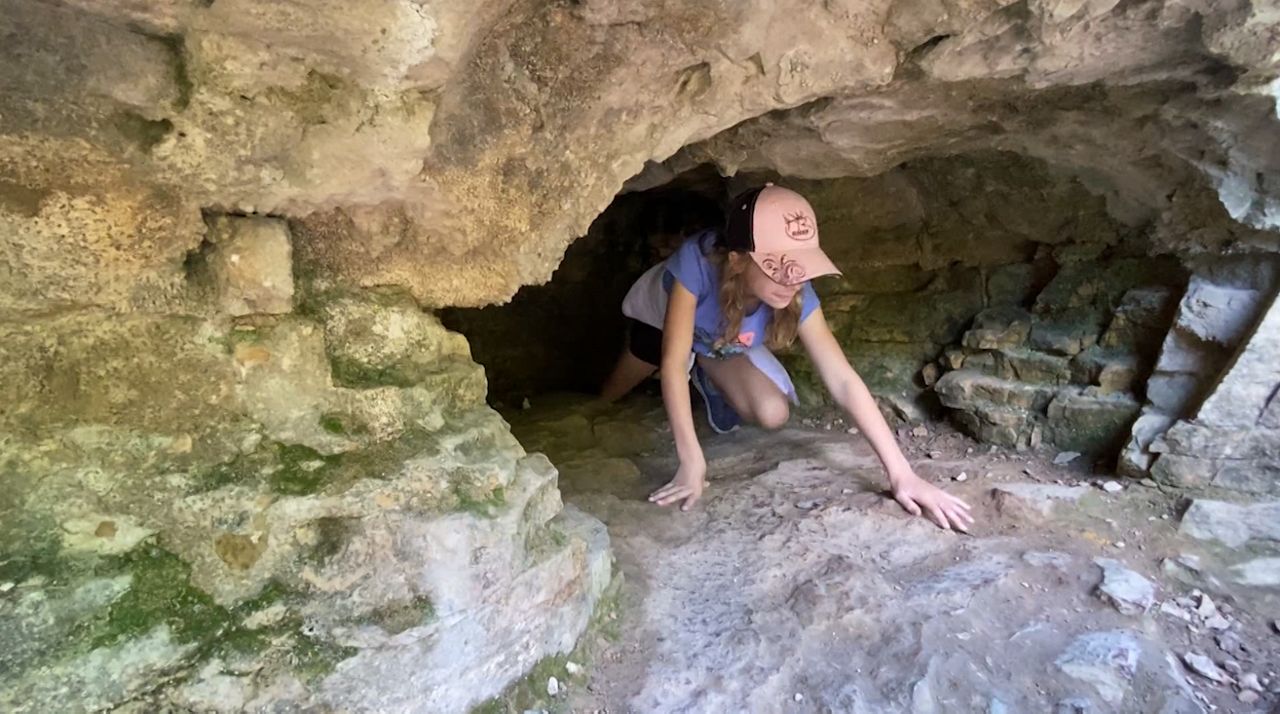
“Parents do go through there,” said Shelley Welch, who is a Cherney Maribel Caves volunteer tour guide. “You hear a lot more [complaining] of the knees of the parents than you do the kids.”
A pair of sisters from Wrightstown recently enjoyed climbing rock ledges and exploring the hidden tunnels.
“I like going in the caves because we don’t have a lot by us,” said London Peterson. Her younger sister Winter enjoyed the hiking trails, finding wild raspberries, and the cool water that flows from Spring Cave.
“I drink it all the time. It’s really good water,” said Welch. “It’s mineral water.”

Spring Cave is closed to the public, but water flows from the entrance and feeds into the West Twin River. The water from Spring Cave, which is high in magnesium, was sought after by many for its health benefits.
The park is home to Maribel Caves Hotel, a therapeutic spa, which was built in 1900.
In earlier days, the railroad brought people from all over looking for the healing powers of the spring water, but a fire consumed the building in 1984. The remains, which now sit on private property, can still be seen from the park limits.
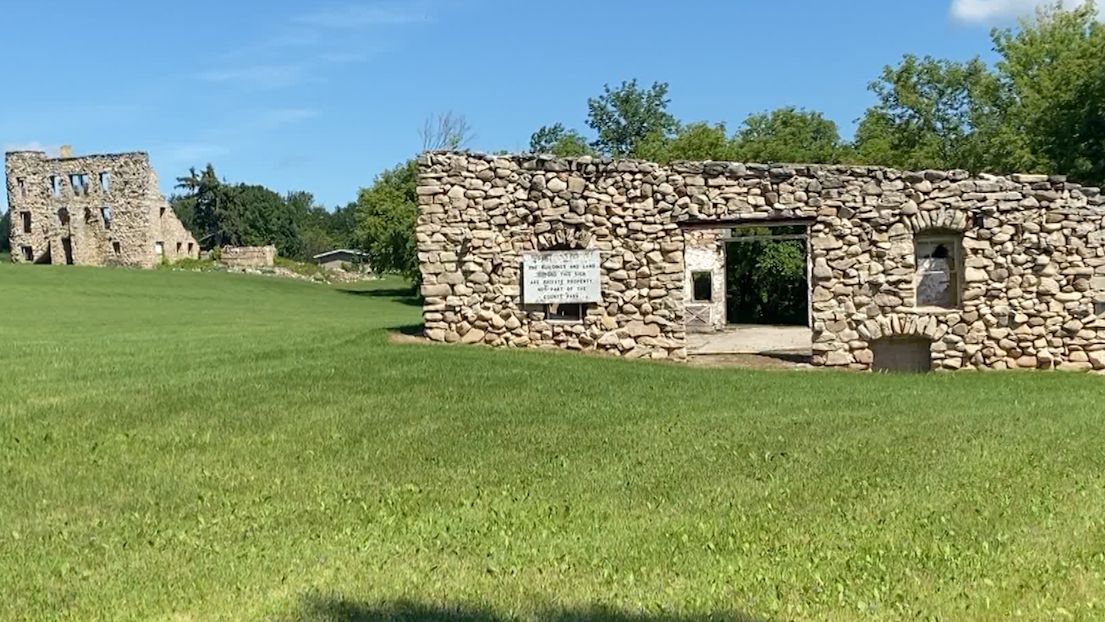
The New Hope Cave is the park’s biggest attraction. Tall passageways allow for all heights to easily walk through on guided tours. Volunteers work on weekends to dig out sediment and expand the underground structure.
Public tours are available on the third Sunday of every month from May to October.
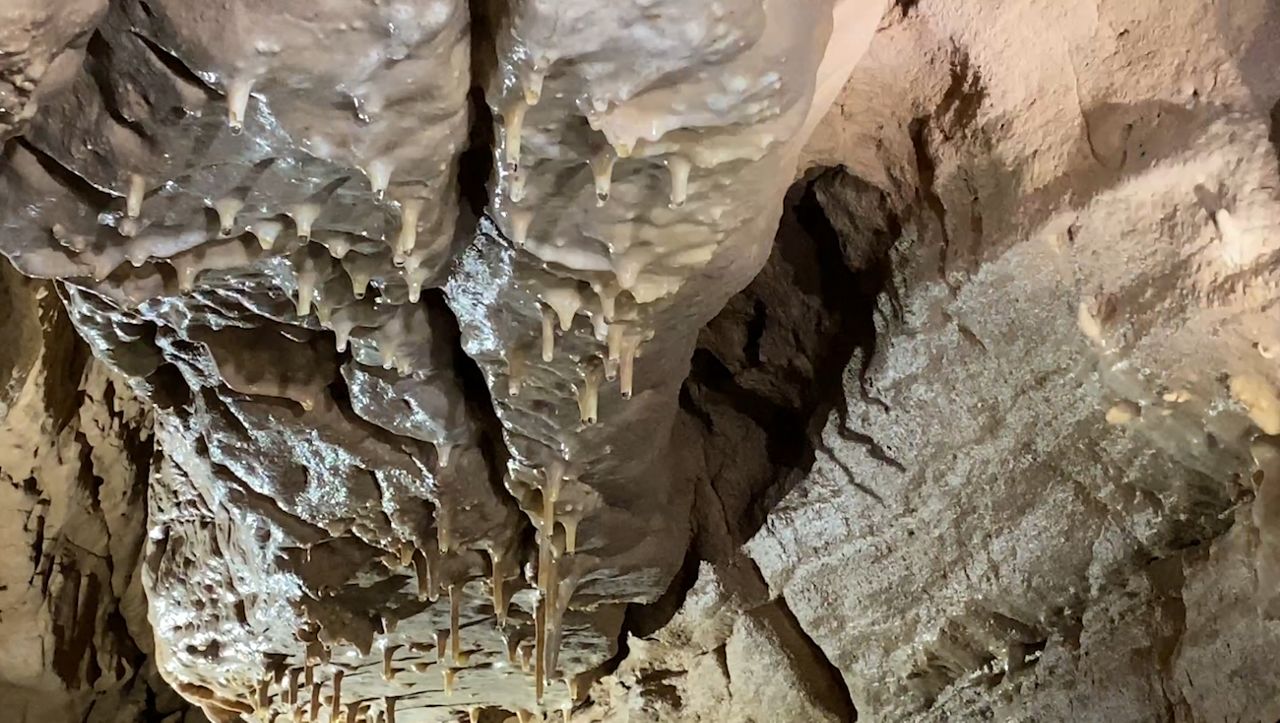
Volunteers spend weekends working on digging out sediment from the caves and overall improvement to the park. Local Scout troops sometimes pitch in on the manual labor, though the cave crews are always looking for more help.
Guides like Welch enjoy sharing their love for the caves.
“What keeps us going is the love of exploration,” Welch said. “Some of us love being underground and just being a part of something bigger than ourselves.”
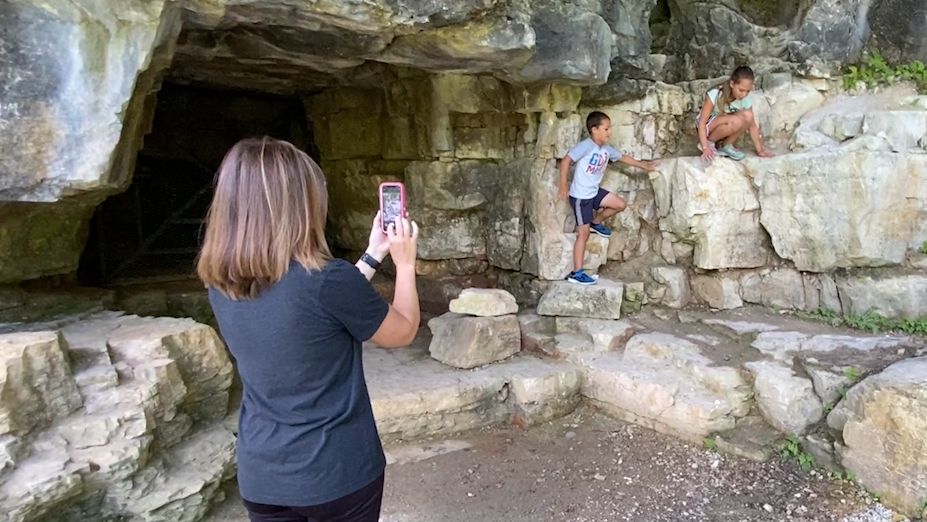
Guided tours of New Hope Cave are free, but donations are accepted in order to make improvements to the park.
While on a tour, Welch pointed out white coloration on the ceiling of the cave, known as Moon Milk.
“That’s actually a living organism,” Welch said. “It has natural antibiotic properties that the soldiers in the Civil War used. They would come and take the Moon Milk out of caves and if they were injured, they would put some on their injuries.”

The interior of the cave system is littered with bat bones, guano and salamanders, as well as different geological formations growing within the cave. Some formations take 100 years to grow just one inch.
Due to the fragile balance of the cave's natural features and ecosystem, volunteers look to protect their hidden gem from unneccessary damage.
“Don’t touch anything above your shoulders,” Welch said. “The oil on your fingers can kill the growth of the formations.”
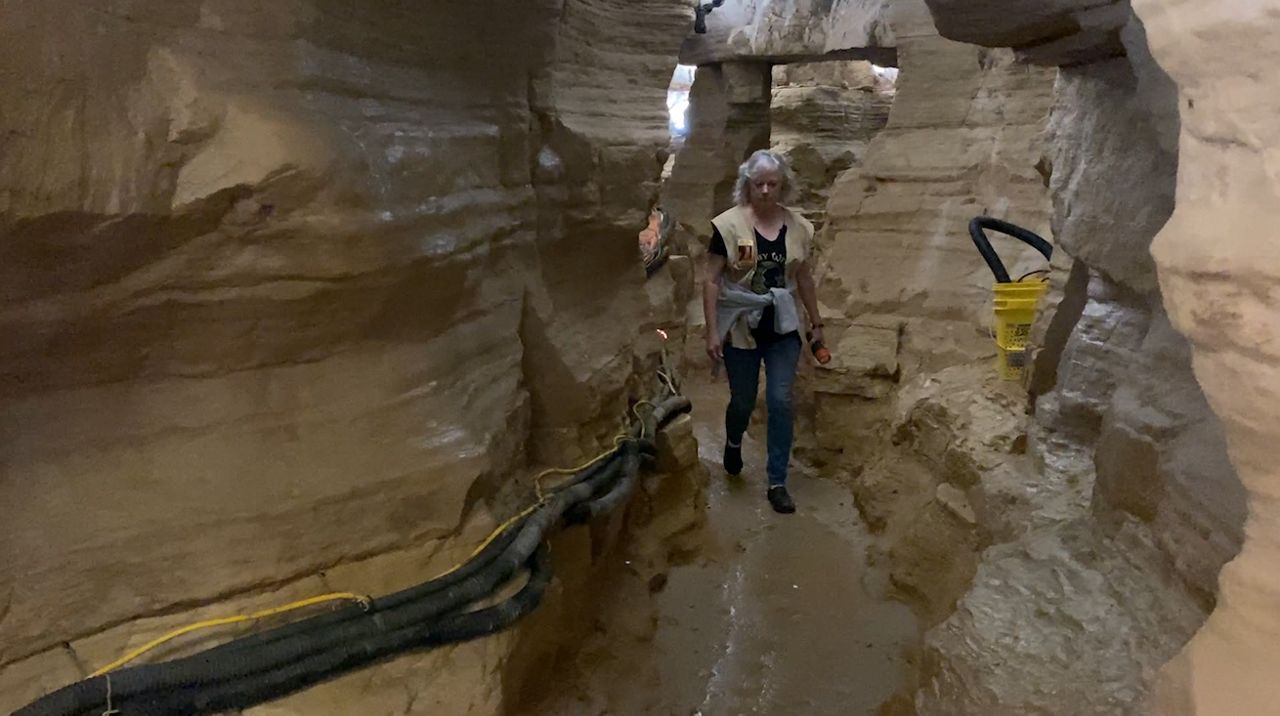
If you visit the caves, expect to get a little dirty and a little wet — some areas have puddles on the ground and drips of water from above. Welch suggests a coat as well, as the temperature inside New Hope Cave stays around 55 degrees year-round. A flashlight may also be useful.
Volunteers are holding a special event on July 17 & 18, during which tours of New Hope Cave will be available both days from 9 a.m to 4 p.m.



